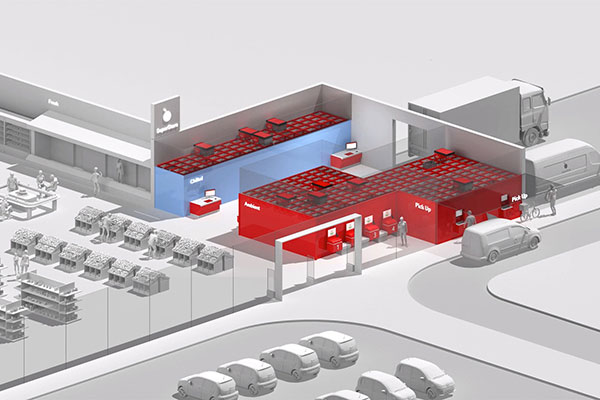Last Mile of the Race
Something once so innovative as two-day delivery has led to next-day delivery, which is quickly becoming obsolete as consumers demand same-day delivery.
This trend has accelerated during the COVID-19 pandemic, especially as more consumers become comfortable with online ordering of perishable items and groceries.
One of the significant changes in supply chain strategies we are seeing as a result of this is the rise of fulfillment centers that bring fulfillment closer to the consumer.
Fulfillment Centers
Typically, one of the dominant components in a company’s supply chain was the large warehouse or distribution center that acted as a central hub from where products are shipped to retail outlets.
These are now being joined by a network of fulfillment centers that focus on localized, direct-to-customer service. They are designed to primarily get online orders to the customer quickly.
These facilities have become a powerful tool in conquering the last mile and helping maintain a pleasant, seamless customer experience.
One relatively new type of fulfillment center that is gaining a lot of attention is the micro-fulfillment center. Micro-fulfillment centers are a simple and compact last-mile delivery solution that can be quickly deployed anywhere, especially where real estate space is limited or cost-prohibitive.
While they are generally smaller in size than regional or metro-fulfillment centers, they can be virtually any size, providing the needed flexibility to meet customer needs and fit nicely into a wide range of supply chain strategies.
Micro-fulfillment Featuring AutoStore
Micro-fulfillment centers can be built as a standalone facility, or built inside or bolted onto an existing location to expand fulfillment capacity, especially within a limited footprint. They are also well suited for automation technology, bringing it to the lowest supply chain level.
While they can be used in a number of market segments and industries, micro-fulfillment centers have gained the spotlight as a result of the accelerated demand for e-grocery fulfillment. Micro-fulfillment has shown to be an ideal solution for streamlining e-grocery fulfillment.
For instance, Swisslog is working with H-E-B to deploy multiple automated micro-fulfillment centers to support the supermarket chain’s curbside grocery pick-up at more than 40 stores in the San Antonio area. The new micro-fulfillment centers feature AutoStore empowered by Swisslog’s SynQ software, pick stations, and integration.
Customer Fulfillment
Micro-fulfillment centers are quickly becoming an essential part of the supply chain. They hold much promise for helping reduce delivery costs and shorten the last mile and the time to the consumer. They are also an ideal solution for fulfilling online orders for curbside pickup. With the right approach and automation technology, they can help you meet changing expectations and enhance the customer experience.
Swisslog has a comprehensive portfolio of solutions to meet the needs of retail, e-commerce, and e-grocery customers. From large distribution centers to smaller fulfillment centers, there is a wide range of technologies available to address today’s challenges and demands.
Related White Papers
Picking Methods and Technologies
With the multiple choices now available, it is imperative that picking strategies be matched with the right technology and software based on the business’s specific challenges. Download Now!
The COVID-19 Pandemic and Its Effects on the Grocery Supply Chain
This white paper examines how Lights-Out Logistics has come into use, and how it can help our supply chains become more resilient in times of great uncertainty and disruption, such as pandemics and financial crises. Download Now!
Using Automation to Manage Growth in E-commerce Fulfillment
Robotic-based automation solutions enable the flexibility to effectively manage both seasonal and sustained growth. Download Now!
A Guide to E-Grocery Fulfillment Strategies and Technologies
This e-book looks at how COVID-19 has become a major disruptor and is accelerating the need for automated e-grocery fulfillment. Download Now!
Article topics
Email Sign Up























